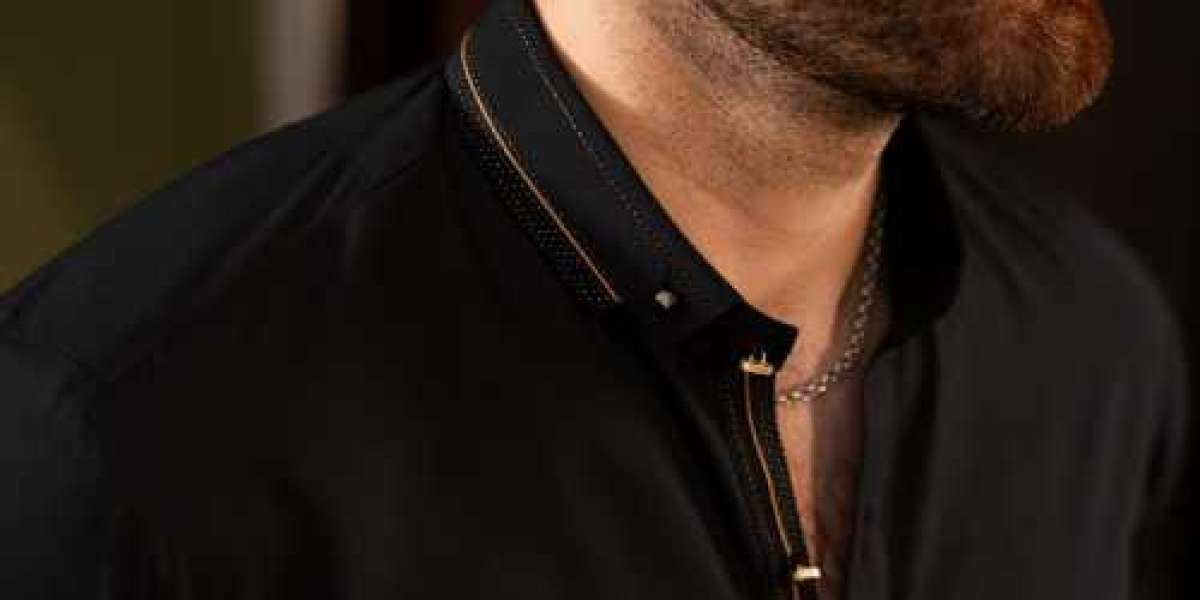Waistcoat Designs
A waistcoat designs, commonly referred to as a vest in some regions, is a sleeveless garment that typically has a buttoned front and is worn over a shirt and under a jacket in a traditional three-piece suit. Waistcoats come in various designs, materials, and styles, each offering unique aesthetic and functional qualities. Let’s dive into waistcoat designs, their types, uses, and the stylistic factors that define them.
1. Classic Waistcoat Design
Classic waistcoats are tailored to be part of a traditional three-piece suit and are characterized by clean lines, simple patterns, and neutral colors like black, navy, or grey. These waistcoats often have a structured fit, hugging the torso to enhance the figure while keeping the look refined and professional.
Key Characteristics:
- Made from wool, polyester, or wool blends to complement suit materials.
- Slim or regular fit, designed to avoid bagginess.
- Front buttons, typically five or six, depending on the length.
- A V-neck or U-neck cut to reveal the shirt and tie beneath.
- The back panel is often made from a contrasting satin or silk fabric with an adjustable strap.
Occasions:
Classic waistcoats are ideal for formal and business settings, giving the wearer a polished appearance when worn under a suit jacket. They are often chosen for corporate meetings, formal dinners, weddings, and other formal occasions.
2. Double-Breasted Waistcoat
Double-breasted waistcoats have an overlapping front with two parallel columns of buttons, giving a more sophisticated and formal look. This style originated in the 19th century and has been popular in traditional and formal menswear.
Key Characteristics:
- Two rows of buttons (usually six to eight in total).
- Higher neckline, often without a collar.
- Heavier fabrics like wool or tweed to maintain structure.
- Often longer than single-breasted waistcoats for a more substantial look.
Occasions:
This waistcoat design is suitable for formal events, giving the wearer an air of distinction. Double-breasted waistcoats are favored in conservative fashion circles, where they’re used as part of traditional formalwear, including for black-tie events or as part of evening attire.
Attention:Tweed waistcoat designs are traditionally associated with English country style and are often worn in outdoor or semi-formal settings.
3. Single-Breasted Waistcoat
Single-breasted waistcoats are the most common and versatile waistcoat style, characterized by a single row of buttons and a sleek, fitted design. This type is available in various lengths, patterns, and fabrics.
Key Characteristics:
- Single row of buttons, usually three to six.
- V-neck, U-neck, or rounded front.
- Made in materials like cotton, linen, wool, or silk blends.
- May include welt pockets on the front for small accessories.
Occasions:
Single-breasted waistcoats are versatile enough to be worn in both formal and semi-formal settings. They are a staple in both casual and business attire, pairing well with suits and dress shirts alike.
4. Lapel Waistcoat
Waistcoats with lapels offer a unique twist by adding a collar to the design. Lapels can add a touch of elegance to the waistcoat, making it more eye-catching when worn without a jacket. There are different lapel types, including shawl, peak, and notch, each lending a specific style to the outfit.
Key Characteristics:
- Addition of a lapel, either shawl, peak, or notch style.
- Often single-breasted but can also be double-breasted.
- Available in various fabrics, including silk, satin, and wool.
- Provides an elevated look suitable for formal events.
Occasions:
Lapel waistcoats are great for semi-formal to formal settings and are especially popular at weddings and evening events. They are also chosen as a statement piece when the wearer opts for a no-jacket look.
5. Casual Waistcoat
Casual waistcoats are designed for a more relaxed look, often made from lightweight materials like linen, cotton, or denim. They can include details like patch pockets, contrast stitching, or different textures to provide a more laid-back appearance.
Key Characteristics:
- Made from materials such as cotton, linen, or denim.
- Often features patch pockets and unique textures.
- Looser fit compared to formal waistcoats.
- May include unconventional button styles or fastenings like toggles or zippers.
Tweed waistcoats are suitable for semi-formal occasions, especially in colder months, as tweed offers warmth and durability. They are popular in traditional events, countryside weddings, or as part of smart-casual wear.
7. Dress Waistcoat
Dress waistcoats are highly formal and are usually worn with morning suits or evening dress ensembles. They are often made from luxurious fabrics like satin or silk and may feature subtle patterns.
Key Characteristics:
- Made from materials like silk, satin, or velvet.
- Available in solid colors or intricate patterns like brocade.
- Often longer and fitted with a pointed or squared hem.
- Higher button stance to align with formal dress shirt collars.
Occasions:
Dress waistcoats are ideal for very formal occasions, such as weddings, black-tie events, or galas, where they are worn under tailcoats or tuxedos for a sophisticated look.
8. Patterned Waistcoat
Patterned waistcoats add visual interest and are popular for those looking to make a bold statement. Patterns can include checks, stripes, florals, or even embroidered designs.
Key Characteristics:
- Patterns such as plaid, houndstooth, paisley, or floral.
- Made from materials that hold color and design well, such as cotton or synthetic blends.
- Slim fit for a modern look or relaxed fit for a more casual appearance.
Conclusion
Waistcoats have evolved far beyond their original functional purpose, now offering a wide range of styles, fits, and fabrics for various occasions. While classic waistcoats remain popular for formal and business settings, more diverse options like casual, tweed, vintage, and patterned waistcoats provide alternatives for casual or semi-formal events. Additionally, the rise of contemporary waistcoat designs underscores how this garment continues to adapt, reflecting modern tastes and fashion trends.
